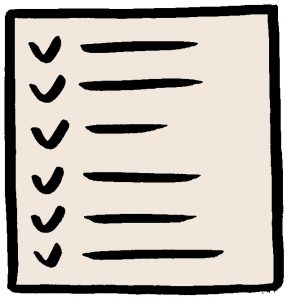 Remember back in school when they told you that if you read a sentence and there’s a natural pause, a comma is necessary? I followed that advice until I realized that half my commas were in the wrong places, so I had to learn to forget that advice. I don’t know about you, but I pause where commas are not appropriate and vice-versa.
Remember back in school when they told you that if you read a sentence and there’s a natural pause, a comma is necessary? I followed that advice until I realized that half my commas were in the wrong places, so I had to learn to forget that advice. I don’t know about you, but I pause where commas are not appropriate and vice-versa.
The better habit is to learn to recognize when you need that comma by “the rules” and practise, practise, practise. The first and most common situation is the complex sentence.
Before I continue, I must clarify that I’m going to speak only to the simplest of cases.
To recognize a complex sentence, look for two complete sentences of equal importance with a joining word (conjunction) but different subjects. This is best done by looking for the new subject in the second part of the sentence then checking to make sure it has its own verb. In a complex sentence, each of the two sentences are properly referred to as an “independent clause.”
You also have to learn which conjunctions (joining words) deserve a comma. But, and, which, yet, for, or, and so are the most common ones. The Editor’s Blog’s article has many examples of where they are used and not used.
Because I read pauses before the conjunctions that don’t normally get a comma (they signal a dependent clause), I found it important to learn some of them as well. As, where, since, that, while, when, and because are the most common ones. This article from Grammar Monster has a listing that’s helpful as well as examples to help you understand more than my little explanation.
Watch carefully not to use the comma when the object end of the sentence has two complete sentences, though! In that case, they’re called “dependent clauses” because they sort of lean on the first part of the sentence rather than form a new one. Grammar Monster has a useful link with examples to help learn these situations.
If a chunk in the middle of the sentence can be pulled out and the sentence makes sense if you read it with the chunk missing, it’s probably what’s called a “parenthetical phrase.” Think like you could put it in parenthesis, except that parenthesis are rarely used in fiction. This phrase is usually separated out by two commas, but if it’s a total change in direction of thought, the em-dash is used.
If you re-name a noun in a sentence, the second one is called an appositive. My trick to knowing if the appositive deserves commas or not comes from the editing of Alias Thomas Bennet for publication. Meryton Press copy editor/proofreader/layout editor (yes, she’s all that and a cover artist too!), Ellen Pickels marked explanations on two sentences similar to the following:
Mr. Darcy’s cousin Colonel Fitzwilliam joined him in the call to Hunsford.
Lady Catherine was speaking to her daughter, Anne, on the settee.
My “trick” is to remember the “Mr. Darcy’s Cousins” examples. The simple explanation to the reason there is no comma for Colonel Fitzwilliam and commas for Anne deBourgh:
- Mr. Darcy has more than one cousin, so Colonel Fitzwilliam doesn’t get commas.
- Lady Catherine has only one daughter, so Anne gets commas.
The “proper” explanation relates to restrictive and non-restrictive appositives. Yeah, sounds scary! In the first italicized sentence, “Colonel Fitzwilliam” is a restrictive appositive. The appositive is necessary for the reader to know which of Mr. Darcy’s cousins is there. In the second sentence, if Anne was removed, the sentence would have the exact same meaning. This is called a non-restrictive appositive. It’s easier for me to remember many cousins and one daughter, though. Chicago Manual of Style has another way of explaining it that may help if I’ve mucked it up worse in your mind!
When a sentence appears to be complex with a parenthetical phrase (perhaps a prepositional phrase) that can be pulled out, it becomes confusing as to where the comma goes—before or after the “and?” That is, the “and” may appear like it should stay with the sentence, leading you to believe the comma goes after it. In some cases, that is correct. But when?
Gail Warner, my Meryton Press editor for my two novels and most recent novella, taught me a trick. “If you pull out the phrase, would you use the comma in front of the ‘and?’” So if the second sentence is part of the end of the first sentence (dependent clause) you wouldn’t use a comma if the phrase was missing. In that case, the comma goes after “and.” If you have a pair of independent clauses, there would be a comma before the “and.”
A comma is used before the closing quotation mark if a dialogue tag like “she said” is used, like the example on the left.
As in the picture below, a comma is necessary to break off a name when a person is addressed below. 
Wow, we’ve learned a lot about commas today. Trouble is, there are about 100 other rules for them. Just another reason to have a good editor who knows the details!
Speaking of which, Gail Warner and I are working on my latest, A Most Handsome Gentleman. She’s removed dozens of commas that I put before the subordinating conjunction “as.” I need to practise more!
Yeah, I know. Preaching to the choir! Thanks for continuing to read, but how about those comments? There will be a draw for a prize at the end of the series!
Disclaimer: I’m not a writing expert. I’m just a writer who learned some stuff other writers might like to know instead of learning the hard way. My approach is pragmatic, and my posts are not professionally edited!
Save
Save



